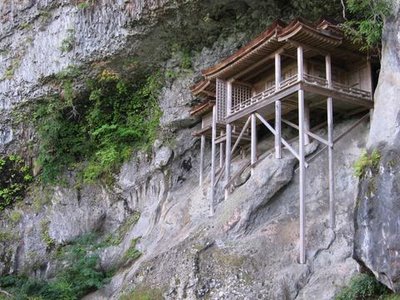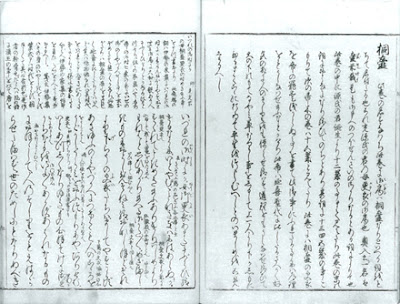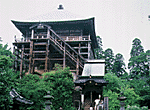. juzu 数珠, nenju 念珠 rosary legends .
:::::::::::::::::::::::::::::::::::::::::::::::::::::::::::::::::::::::::::::::::::::::::::::::::::
Rosary (juzu) Rosenkranz
***** Location: Japan
***** Season: Topic
***** Category: Humanity
*****************************
Explanation
Rosaray (nenju, juzu) 念珠、数珠, 誦数
"The rosary's structure, with its specific numbers and sizes of beads arranged in a prescribed pattern, is a framework,
like a haiku or a sonnet."
© www.atelier-beads.com



As you can see in photo 1, the use of holding a rosary in Buddhist sects of Japan is different.
Rosaries are also called "prayer beads".
:::::::::::::::::::::::::::::::::::::::::::::::::::::::::::::::::::::::::::::::::::::::::::::::::::
A string of beads or a rosary, used for Buddhist prayer and invocation. Associated particularly with a chant repeating the name of Amida Nyorai. The number and shape of the beads varies, but the most common type has 108 beads. Rosaries were introduced to Japan with Buddhism.
Originally rare and precious, the spread of Buddhism brought wider use of "nenju" from the Heian Period (8th-12th century) through the Kamakura Period (12th-14th century). Permission to trade in rosaries during the Edo Period (17th-19th century) made them available to the general public. Kyoto has many head temples of various Buddhist sects, and the techniques of making rosaries have been passed down from generation to generation.
The number "108" is a sacred number in many Buddhist traditions. It is said to represent the number of earthly passions and desires that blind and delude us, entrapping us in the Six States of Existence (the wheel of life, the cycle of samsara, the cycle of suffering and reincarnation). At the end of each year, Japanese temples strike a large bell 108 times to symbolically awaken us from our delusions. This bell-ringing tradition is called Joya-no-Kane (除夜の鐘).
RESOURCE GUIDE TO JAPANESE PILGRIMS & PILGRIMAGES
Mark Schumacher
:::::::::::::::::::::::::::::::::::::::::::::::::::::::::::::::::::::::::::::::::::::::::::::::::::
Rosenkranz

Large Rosary at Mitoku San
- by Gabi Greve
:::::::::::::::::::::::::::::::::::::::::::::::::::::::::::::::::::::::::::::::::::::::::::::::::::

Reciting with the Rosary, juzu kuri,
juzu mawashi 数珠回し
... where children sit and recite a long rosary with many large beads, since Jizo is the protector deity of children.
Jizo Bon and Haiku
To pass a large rosary in a common prayer session is rather common in rural Japan, not only for the o-Bon ceremonies. I have observed them quite often. Sometimes real big beads are used, the BIG rosary, 大数珠回し.

*****************************
Worldwide use

CHINA : Shu-Zhu" ("Counting Beads")
HINDUISM : Prayer beads, or Japa Malas, rudraksha mala, bead mala
ISLAM : Misbaha
WIKIPEDIA has more !
. Rudraksha tree ("Rudra's eyes") .
India Saijiki
*****************************
Things found on the way
I have a special statue of Daruma, where he is holding a scroll and a rosary.

What is Daruma holding ?
Jimotsu 持物
........................................
"Old Chinese Ivory Daruma
with Prayer Beads"

- 2ezr Antiques, Los Angeles
:::::::::::::::::::::::::::::::::::::::::::::::::::::::::::::::::::::::::::::::::::::::::::::::::::::
. Edo no shokunin 江戸の職人 Edo craftsmen .

source : edoichiba.jp. jyuzu
juzu shokunin 珠数職人 craftsman making rosaries
juzuya 珠数屋 shop selling rosaries
Many shops were 浅草本願寺、浅草観音前 around the Asakusa Kannon temple.
The material used was mukuroji 無患子(むくろじ) soapberry fruit, suisho 水晶 chrystals, shinju 真珠 pearls or sango 珊瑚 corals.
juzu 数珠,. some pronounce it ずず zuzu.
:::::::::::::::::::::::::::::::::::::::::::::::::::::::::::::::::::::::::::::::::::::::::::::::::::::
The Christian Rosary
It is usually suggested that the rosary began as a practice by the laity to imitate the monastic Office (Breviary or Liturgy of the Hours), by which monks prayed the 150 Psalms. The laity, many of whom could not read, substituted 50 or 150 Ave Marias for the Psalms. Sometimes a cord with counters on it was used to keep an accurate count.
The first clear historical reference to the rosary, however, is from the life of St. Dominic (+1221), the founder of the Order of Preachers or Dominicans. He preached a form of the rosary in France at the time that the Albigensian heresy was devastating the faith there. Tradition has it that the Blessed Mother herself asked for the practice as an antidote for heresy and sin.
One of Dominic's future disciples, Alain de Roche, began to establish Rosary Confraternities to promote the praying of the rosary. The form of the rosary we have today is believed to date from his time. Over the centuries the saints and popes have highly recommended the rosary, the greatest prayer in the Church after the Mass and Liturgy of the Hours. Not surprisingly, it's most active promoters have been Dominicans.
Rosary means a crown of roses, a spiritual bouquet given to the Blessed Mother.
It is sometimes called the Dominican Rosary, to distinguish it from other rosary-like prayers (e.g. Franciscan Rosary of the Seven Joys, Servite Rosary of the Seven Sorrows). It is also, in a general sense, a form of chaplet or corona (also referring to a crown), of which there are many varieties in the Church. Finally, in English it has been called "Our Lady's Psalter" or "the beads." This last derives from an Old English word for prayers (bede) and to request (biddan or bid).
© Colin B. Donovan, STL
.................................................................................
observance kigo for late autumn
rozario sai, rosariosai ロザリオ祭 (ろざりおさい)
"Feast of the Rosary"
rozario no tsuki ロザリオの月(ろざりおのつき)
Memorial of Our Lady of the Rosary
rozario no seibo no hi ロザリオの聖母の日(ろざりおのせいぼのひ)
Our Lady of the Rosary
October 7
. Christian Celebrations in Japanese Kigo
*****************************
HAIKU
ねはん会や皺手合る珠数の音
Nehan-e ya shiwa-de awaseru juzu no oto
Basho
Nehan Ceremony-
wrinkled hands in prayer and
the sound of rosary beads
Tr. Gabi Greve
Nirvana Ceremony and Haiku
:::::::::::::::::::::::::::::::::::::::::::::::::::::::::::::::::::::::::::::::::::::::::::::::::::::
首塚にロザリオひとつ額の花
kubizuka ni rozario hitotsu gaku no hana
on the head mound
just one rosary -
hydrangeas
Kashiwara Min-U 柏原眠雨
Tr. Gabi Greve
Kubizuka, memorial stone pagodas and mounds
for the beheaded ... 首塚 .. and Haiku
:::::::::::::::::::::::::::::::::::::::::::::::::::::::::::::::::::::::::::::::::::::::::::::::::::::
Young green leaves
Mirrored in the crystal beads
Of my rosary.
Kawabata Bosha
:::::::::::::::::::::::::::::::::::::::::::::::::::::::::::::::::::::::::::::::::::::::::::::::::::::
a rose is a rose is a rose
memories of
my mother's rosary
- Isa Kocher (Turkey)
:::::::::::::::::::::::::::::::::::::::::::::::::::::::::::::::::::::::::::::::::::::::::::::::::::::
In my Japanese Haiku Temple
I burn incense to calm the mind
I use my rosary with 17 beads
Five seven five
I read my Good Book, called
Saijiki, full of seasons best words
Kigo, the pillars of my prayer
I wiggle my fingers as a means
Of saying my prayer
After all, this is a Haiku Temple
Sometimes I pause
Kireji
And start again with fresh inspiration
In my final thoughts
I embrace all poets
with my one short breath mumbelings
<> In my English Haiku Temple
I miss many things
I find <> freedom <>
But I wonder and wonder
Gabi Greve
October 2004 on a rainy morning
:::::::::::::::::::::::::::::::::::::::::::::::::::::::::::::::::::::::::::::::::::::::::::::::::::::
evening dew --
these worn beads slipping through
old fingers
- Shared by Elaine Andre -
Haiku Culture Magazine, 2013
*****************************
Related words
***** "Rosary Bead Plant", Job's tears, juzudama
数珠玉 じゅずだま
kigo for late autumn
zuzuko ずずこ、"Chinese Barley", toomugi 唐麦(とうむぎ)
(Coix lacryma-jobi)

:::::::::::::::::::::::::::::::::::::::::::::::::::::::::::::::::::::::::::::::::::::::::::::::::::::
The biggest bead in a rosary of the Sects of the Pure Land represents Amida Nyorai.
***** Namu Amida Butsu, the Amida Prayer
***** Saijiki of Japanese Ceremonies and Festivals
:::::::::::::::::::::::::::::::::::::::::::::::::::::::::::::::::::::::::::::::::::::::::::::::::::::::::::::::::::::::::::
. juzu 数珠, nenju 念珠 rosary legends .
[ . BACK to DARUMA MUSEUM TOP . ]
[ . BACK to WORLDKIGO . TOP . ]
- #juzu #rosenkranz #rosary #shinju -
:::::::::::::::::::::::::::::::::::::::::::::::::::::::::::::::::::::::::::::::::::::::::::::::::::::::::::::::::::::::::::











































